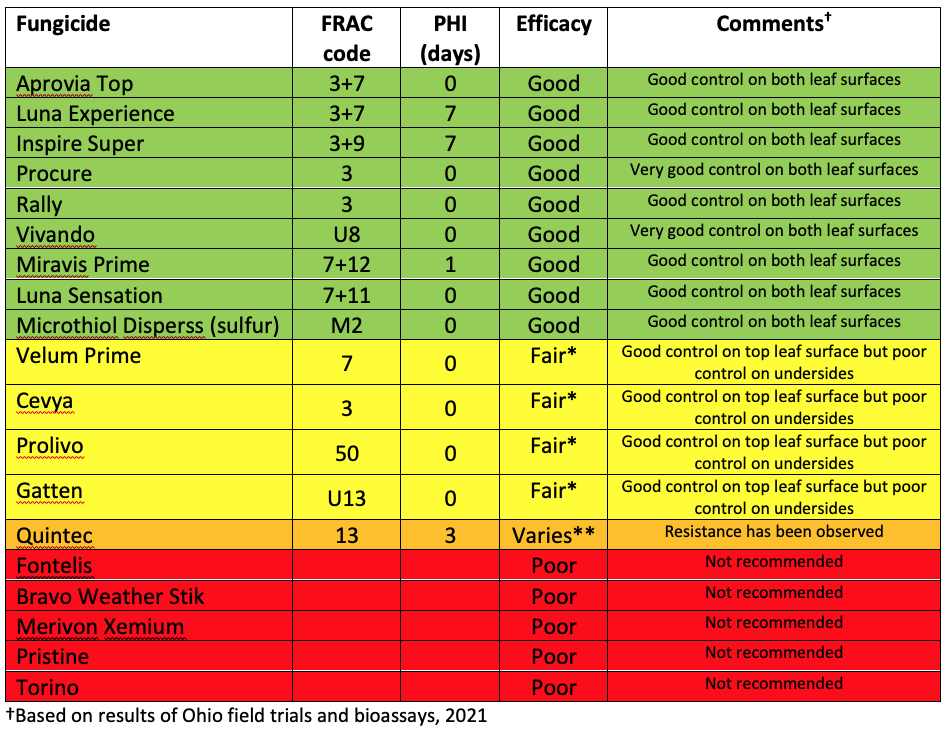
Powdery mildew colonies on the underside of a pumpkin leaf. Fungicide applications should start when these colonies are first observed during scouting. It is important to check both surfaces of the leaves. Photo by Josh Amrhein.
Powdery mildew usually appears on pumpkins and other cucurbits in Ohio beginning in early July. The pathogen does not overwinter in Ohio; infections result from spores blown into the area on the wind. Powdery mildew is favored by moderate to high temperatures and high humidity. However, unlike most other fungal plant pathogens, it is inhibited by free moisture on the leaf surface.
Signs of infection are small circular powdery growths on either side of the leaf. These spots enlarge and can eventually cover most of the leaf surface and kill the leaves. Stems and leaf petioles are also susceptible, but the disease is not observed on fruit. In pumpkins, powdery mildew may also attack the “handles”, which can be further damaged by secondary pathogens. It is time to start scouting cucurbits for powdery mildew.
Powdery mildew is managed using disease-resistant varieties and fungicides. Pumpkin and squash varieties vary in resistance to powdery mildew; in general, the more susceptible the variety, the more fungicide needed. The choice of fungicide is important because insensitivity to overused fungicides is common. It is critical that a fungicide resistance management program is followed. Alternate fungicides in different FRAC (Fungicide Resistance Action Committee) groups, indicating different modes of action against the fungus. Fungicide applications should begin when the disease first appears and incidence is low. Fungicides that are labeled for use against cucurbit powdery mildew can be found in the searchable Midwest Vegetable Production Guide for Commercial Growers.
OSU evaluations of efficacy of powdery mildew fungicides in Ohio in 2021 indicated that Aprovia Top, Luna Experience, Inspire Super, Rally, Miravis Prime, Luna Sensation, Microthiol Disperss, Vivando and Procure provided very good control of powdery mildew on pumpkins (see table below). Velum Prime, Cevya, Prolivo and Gatten provided good control of powdery mildew on upper leaf surfaces but poor control on the lower surfaces.
Quintec provided good control in 2021 but in other years and other states has failed due to resistance. Fontelis, Bravo Weather Stik, Merivon Xemium, Pristine, and Torino have been shown to provide poor or variable control in Ohio or other states and are not recommended.
Always check label for full list of allowed crops and use recommendations and restrictions.
